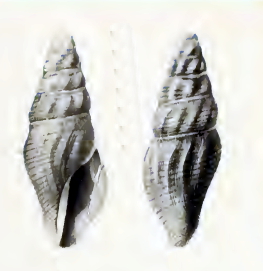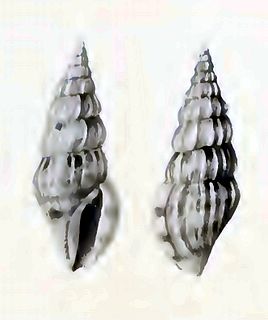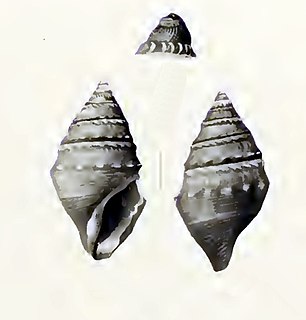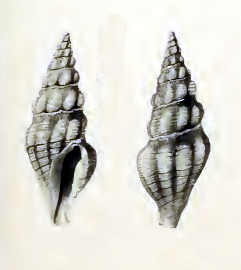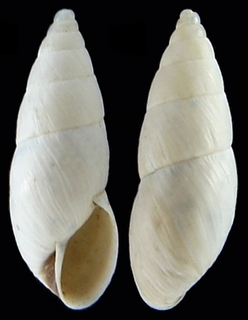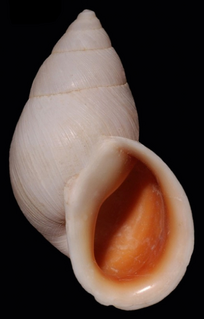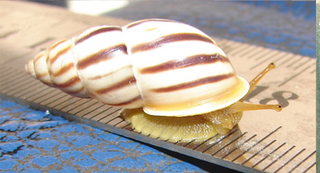| Bostryx fragilis | |
|---|---|
 | |
| Holotype of the shell of Bostryx fragilis. Shell height 18.0 mm. | |
| Scientific classification | |
| Kingdom: | Animalia |
| Phylum: | Mollusca |
| Class: | Gastropoda |
| (unranked): | clade Heterobranchia clade Euthyneura Contents |
| Superfamily: | Orthalicoidea |
| Family: | Bulimulidae |
| Genus: | Bostryx |
| Species: | B. fragilis |
| Binomial name | |
| Bostryx fragilis Breure & Mogollón Avila, 2010 [1] | |
Bostryx fragilis is a species of tropical air-breathing land snail, a pulmonate gastropod mollusk in the family Bulimulidae.
In biology, a species ( ) is the basic unit of classification and a taxonomic rank of an organism, as well as a unit of biodiversity. A species is often defined as the largest group of organisms in which any two individuals of the appropriate sexes or mating types can produce fertile offspring, typically by sexual reproduction. Other ways of defining species include their karyotype, DNA sequence, morphology, behaviour or ecological niche. In addition, paleontologists use the concept of the chronospecies since fossil reproduction cannot be examined. While these definitions may seem adequate, when looked at more closely they represent problematic species concepts. For example, the boundaries between closely related species become unclear with hybridisation, in a species complex of hundreds of similar microspecies, and in a ring species. Also, among organisms that reproduce only asexually, the concept of a reproductive species breaks down, and each clone is potentially a microspecies.

A land snail is any of the numerous species of snail that live on land, as opposed to sea snails and freshwater snails. Land snail is the common name for terrestrial gastropod mollusks that have shells. However, it is not always easy to say which species are terrestrial, because some are more or less amphibious between land and fresh water, and others are relatively amphibious between land and salt water.

Bulimulidae is a taxonomic family of medium-sized to large, air-breathing, tropical and sub-tropical land snails, terrestrial pulmonate gastropod molluscs in the superfamily Orthalicoidea.
The specific epithet fragilis is from the Latin language and means "fragile", it refers to the thin shell. [1]
In zoological nomenclature, the specific name is the second part within the scientific name of a species. The first part of the name of a species is the name of the genus or the generic name. The rules and regulations governing the giving of a new species name are explained in the article species description.










